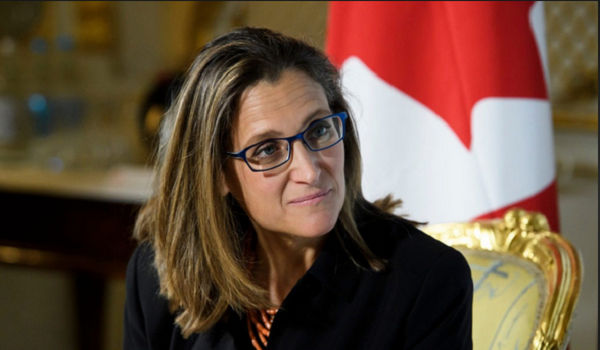Ontario kids could soon start being taught coding in kindergarten
Ontario kindergarten kids will likely not learn coding by sitting in front of a computer screen as part of the new provincial curriculum.
Education Minister Stephen Lecce announced earlier this week the province will be revamping the 2016 curriculum for its youngest learners.
Kids between the ages of four and five will soon have mandatory literacy and math instruction as early as kindergarten. Part of that mandatory learning, Lecce said, would be coding.
The announcement led some to wonder how this would work—would kids be at a keyboard learning HTML or Python?
While the curriculum has not been finalized, the likely answer is no. Experts say they expect instruction to remain unplugged and play-based.
“What coding does is create a logical understanding of if-then relationships, cause and effect relationships,” Todd Cunningham, a clinical psychologist and associate professor at the University of Toronto, told CTV News Toronto.
Cunningham added that the game ‘Simon Says,’ where kids are told to follow the actions of a leader, could be an example of how those relationships are taught.
Melissa Sariffodeen, CEO of the not-for-profit Canada Learning Code, said early learning coding instruction is about giving kids the building blocks necessary to actually use programming languages later in life.
An example she gave would be to have the educator act like a robot, with the kids giving them commands to do simple tasks like making a sandwich or getting dressed. The educator, however, wouldn’t react to instructions that don’t align with how a computer would understand the instructions.
“The students would be encouraged to think and act really sequentially,” she said.
Depending on resources available, she cited the use of popular tools such as the Fisher-Price Think & Learn Code-a-pillar, which encourages kids to connect segments of the insect to make it move in different directions.
Skills such as pattern recognition and understanding how to break a problem into smaller components can be key when it comes to using technology, Sariffodeen said.
“Our recommendation, would be to mostly focus on the unplugged (activities). No computer needed for this type of age range.”
She said technology would ideally be introduced once language and math skills are a bit more developed. This could happen at the age of six, but Sariffodeen says that ages eight to 13 has been her company’s “sweet spot.”
“The vast majority of the class is at a place where they can start using a keyboard, using some of this technology, read, have the math underpinning to support it,” she said, noting that some students may take to it better than others.
A spokesperson for the minister of education said the new curriculum will embrace change by teaching students “how to code in an age-appropriate way.”
Part of this could include problem-solving and creating computational representations of mathematical situations.
An example provided by officials includes creating step-by-step instructions on how to move an object out of a maze, something the government says will help develop spatial reasoning, positional language, and sequencing events. Other examples include following directions using cards with arrows or having children follow the instructions of their classmates to complete a task.
Over the last few years, the Ontario government has altered school curriculums to focus on literacy, math and technology.
This includes a significant amount of time spent on coding and data analysis. As early as Grade 1, students will work on determining patterns, solving problems and creating “computational representations of mathematical situations by writing and executing code” as part of a strand on Algebra.
By Grade 8, students will be expected to read and alter existing code as well as analyse data to inform their decisions.
This article was reported by CTV News
















